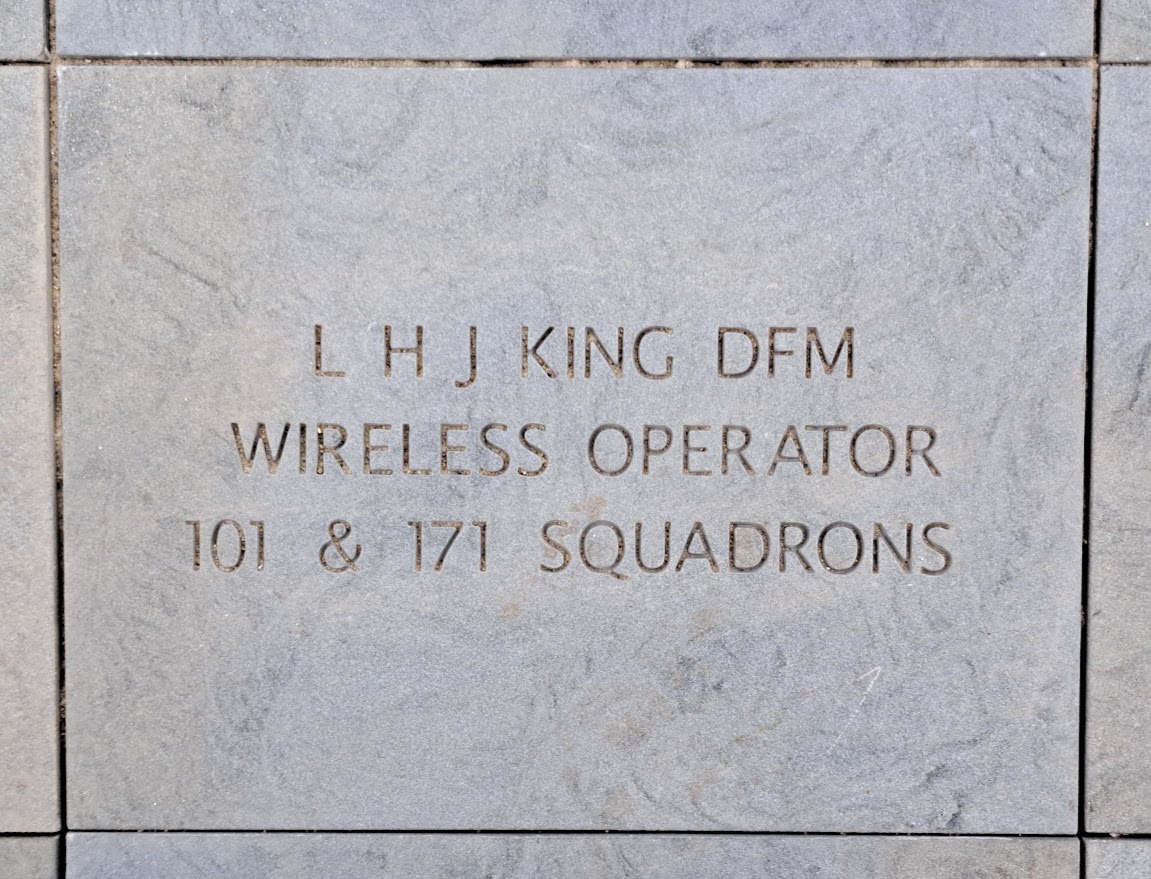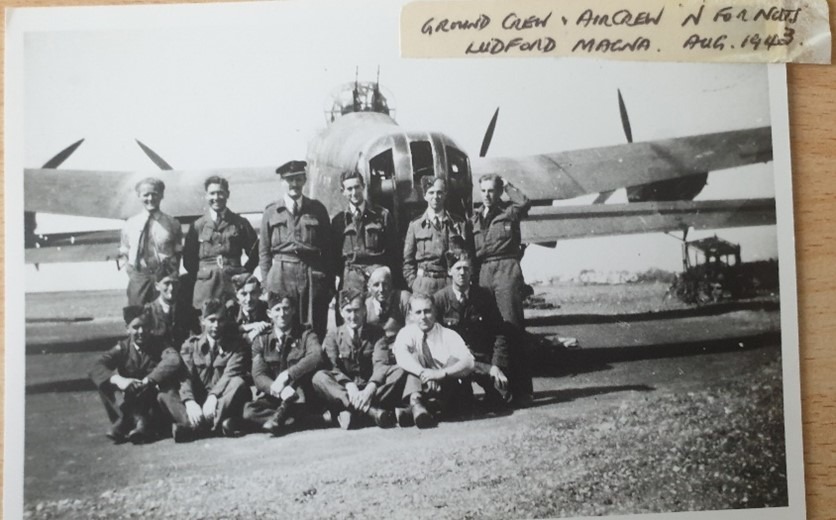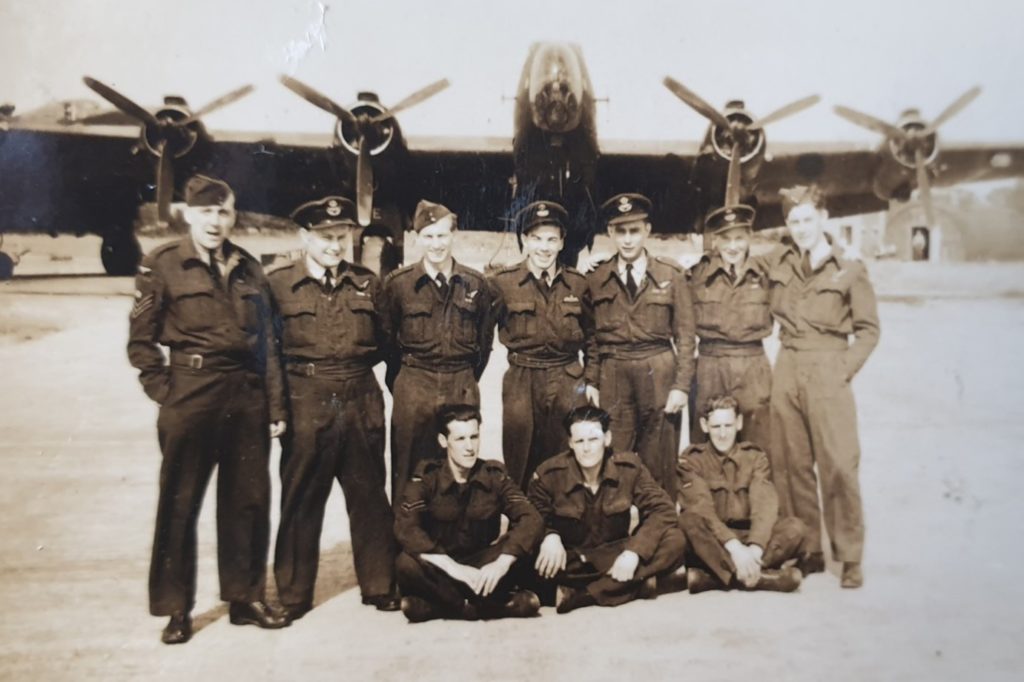STORIES BEHIND THE STONES
LESLIE HENRY JOHN KING
(1921-2002)
Dad was born at home at number 7 April Street, Hackney, London in 1921. Educated at Stoke Newington Central School until the age of 16, he subsequently found a job as a Junior Office Clerk with the shipping company Furness Withy & Co Ltd at their offices in the Surrey Commercial Docks, Rotherhithe.
Even before war was declared in September 1939, a number of the older male staff at Furness Withy began to join up, enlisting with the Territorial Army so that they would be the first to called up for active service. Being too young but also wanting to make some sort of contribution, Dad joined the Home Guard. When he turned 19 in November 1940, Dad thoughts turned to joining up and he recalled in some notes about his own life how he decided to proceed:
It was time for me to consider what service would suit me. Certainly not the infantry to experience what my father had gone through; I couldn’t swim so that ruled out the Navy. So it had to be the RAF and to make sure I volunteered and duly went to the RAF recruiting office at Duke Street, Euston to undergo a strict medical exam & also a Maths and English exam. My parents did not know.
Dad reported first to RAF Cardington near Bedford. He went on to Skegness for “square bashing”, then to RAF Harwell as station defence pending signals school training and on to RAF Hampstead Norris.
By February 1942, he had learnt morse code and went to No. 1 Signals school at RAF Yatesbury for training in maintenance of radio equipment (transmitters & receivers). He was subsequently posted to No 4 Signals School at RAF Madley for flying instruction. After 16 flights and 17 hours, 10 mins flying time, he passed out as Wireless Operator. In October 1942, he was posted to No 3 AGS (Air Gunnery School) at RAF Castle Kennedy in Scotland spending his 21st birthday there the next month. After only 8 flights and 6 hours flying time, he passed out as Air Gunner and so became “Sergeant, Aircrew”. After a short period of leave, he was sent to RAF Finningly to crew up.
In early 1943 he reported to 27th OTU Lichfield doing “circuits and bumps” in Wellington bombers. His first recognised “Op” was on 04 March 1943 to the Lille area of France to drop leaflets. He was then posted to 1656 Heavy Conversion Unit at RAF Lindholme by which time his first crew had been made complete.
In late April/early May he was posted to 101 Squadron at RAF Holme on Spalding Moor where he completed his next 6 ops before transferring to RAF Ludford Magna where he completed his first tour.
Dad spoke to me quite a bit about his experiences on his first tour with 101 Squadron, but what was striking was that in almost any story he recounted to me, he spoke with such admiration of and gratitude for his skipper and pilot known to the crew as “Scrym”, full name William Alexander Scrymgeour-Wedderburn, D.F.C.
There is an account of Dad first meeting and crewing up with Scrym in the short story “The Pilot Rebel” contained within the book “Hell on Earth” by Mel Rolfe, a substantial part of the material of which was gleaned by Rolfe from information provided by Dad when he was contacted by the author. The short story recounts an 11 hour+ op to Turin in July 1943 as well as some hairy moments over the Ruhr. On 6th September 1943, the crew completed its 30 op tour with a trip to Munich. Dad’s crew was the first on the squadron to successfully complete its first tour. The whole crew were awarded Distinguished Flying Medals (DFM) and Scrym the Distinguished Flying Cross (DFC). The Skipper paid for a slap-up party. Later that month Dad was introduced to a friend of Scrym, Flight Commander Sandy Greig, whose son Tony would go on to captain the England cricket team in in the 1970s.
Dad sitting 2nd from left and the skipper 3rd from left standing
Reunion around the 1980s – from l to r: Dad, Sandy Greig, Scrym, unknown
In October 1943, Dad was posted to 30 OTU at RAF Hixon and then to its satellite base RAF Sleighford as an instructor. At this point, the news came through that Dad had received a commission to become “Flight Lieutenant”. At Sleighford Dad regularly flew a Wellington Bomber with Wing Commander Doug Parker to get fresh supplies for the mess. What was remarkable about this is that just the two of them who carried out these flights, navigating from sight. While here working as an instructor, Dad first met a man called Joe Brogan who was to become the skipper of his second crew and second tour, this time as part of 171 Squadron. Dad was sent back to RAF Hixon and then on to RAF Langar to crew up but this time not as the Wireless Operator but as a Special Wireless Operator (SWOP) in an eight-man crew. After around a week, Dad was sent on ahead of the crew to RAF North Creake to be instructed in the operation of “Mandrel”. One of his new duties was to operate this new radar jamming device. This from the RAF Historical Society:
As to the other jamming units, No 199 Sqn was operating Stirlings and No 171 Sqn Halifaxs, both equipped with MANDREL. The primary role of these two squadrons was to present the German early warning radars with a continuous concealing screen on a line parallel to and some 80 miles from the frontier or the front line. The aim was to ensure that all movements coming from behind the screen remained obscured from the early warning radars.
The rest of Dad’s crew followed on but not before the first operation of Dad’s second tour. And so it was that on 23 December 1944, Dad flew op number 31 to Frankfurt with Flight Sergeant Brown and for the first time flew in a Halifax bomber. The operation had to be aborted as the hydraulics become “u/s” (unserviceable) but still counted as the first of this second tour.
As a shy and inexperienced crew member on his first tour with 101 Squadron, Dad was very much a junior member of the group, and his skipper Scrym was a man for Dad to look up to admire. By the time Dad started his second tour with 171 Squadron, he was almost a veteran and the stories he told and memories he recorded reflected this. Later in life, Dad kept in touch with 3 members of this second crew for many years. Dennis Telfer (“Telf”) the Wireless Operator, Charlie Kaye, the Navigator and Joe Brogan, the Pilot and skipper. This second crew got a reputation on the base for being a “boozy” lot while Dad gained a reputation as the “sober one” who used to make sure they all got back to base safely after a night out. There were stories of pubs running dry in Fakenham, the nearest town to RAF North Creake as well as a story of the whole of the phonetic alphabet being parodied on the blackout boards in the mess. In the manner of “A for ‘Orses” and “C for yourself” when it got to “Q”, the suggestion read “Q for beer – Brogan’s Crew”.
‘Brogan’s Crew’ at North Creake. Standing from l to r: unknown, unknown, Telf, Joe Brogan, Dad, unknown, Charlie Kaye. Seated: all unknown
Of the 6 unknowns, I believe 2 are ground crew and the four other flying crew are “P A Moore” (bomb aimer); “F Meller” (air gunner); “J H Moore” (air gunner); “L W Ley” (Flight Engineer)
‘Brogan’s Crew’ at one of many reunions – this one around the early 1990s. Dad, Joe Brogan and Charlie Kaye all wearing Bomber Command jumpers knitted by Mum
On 17 April 1945, Dad completed his second tour of 20 ops on a mission to Ingolstadt in Bavaria. Dad explained to me that as the end of the war was imminent, the crew agreed to carry on until peace was declared and so four more ops were carried out, the last being on 02 May to Kiel. For that final op, two crews from 199 Squadron (also based at North Creake) were loaned to 171 Squadron. These two crews collided in the air over Kiel killing all 16 men of the 2 crews. It was the final operation that 171 Squadron made in the war.
Five days later the German surrender was signed and in typical style, Brogan’s crew went out to celebrate; that night in Norwich, the next night in Cambridge and then on a trip to watch the 2000 Guineas run at Newmarket. A horse called “Court Martial” won the race and Charlie Kaye was put on a charge for stealing the squadron commander’s bicycle.
Dad was demobbed in 1946, and for many years, like so many other ex-servicemen, spoke very little of his wartime experiences. Gradually as he got older and especially when I showed more of an interest, he talked a little more. He kept in touch with a few old crew mates and as he got older, he made more and more effort to get in touch with those crew mates. He met up at least 3 or 4 times with Bill “Scrym” Wedderburn, in both Scrym’s native Scotland and then at 101 Squadron Association Reunions. And he met up with “Joe, Charlie and Telf” from “Brogan’s Crew” on an ad hoc basis and then later for a weekend once a year together with wives and/or partners. As the years passed by, the connection to his time in the war years grew ever more important to Dad. He joined various additional associations including 100 Group and Bomber Command. He contributed to books written about the RAF and sent away for his own enlistment and service papers. In the last years of his life Dad joined the local Air Crew Association and went to social events with Mum. He had seen more action than most of the other – often slightly younger men – had put together but Dad enjoyed the company and the reminiscing. At Dad’s funeral in May 2002 five of six members from that Association attended and made a guard of honour at the door to the chapel to show their respects to Dad. At the end of the service, I had the Royal Air Force March Past played. As it started up, I heard one of the old airmen burst into tears.
When I was a small boy and first learnt that Dad had flown as a wireless operator for Bomber Command on 54 missions over enemy territory, even though I did not really understand what this meant, I was really impressed. And when I then learnt that he had gone to Buckingham Palace to receive the Distinguished Flying Medal from George VI, I was even more impressed. But Dad was always at pains to tell me that, he did not get the DFM for any act of bravery but because he was just lucky enough to survive. Dad did not want me to think of him as a hero.
But I did….because he was….they all were




